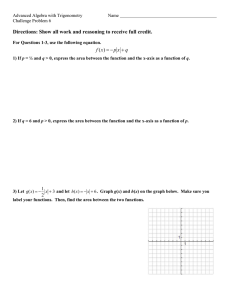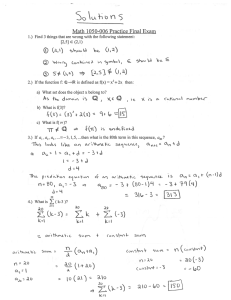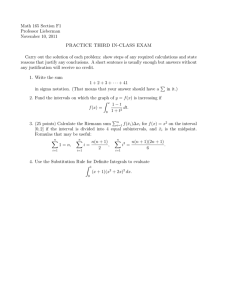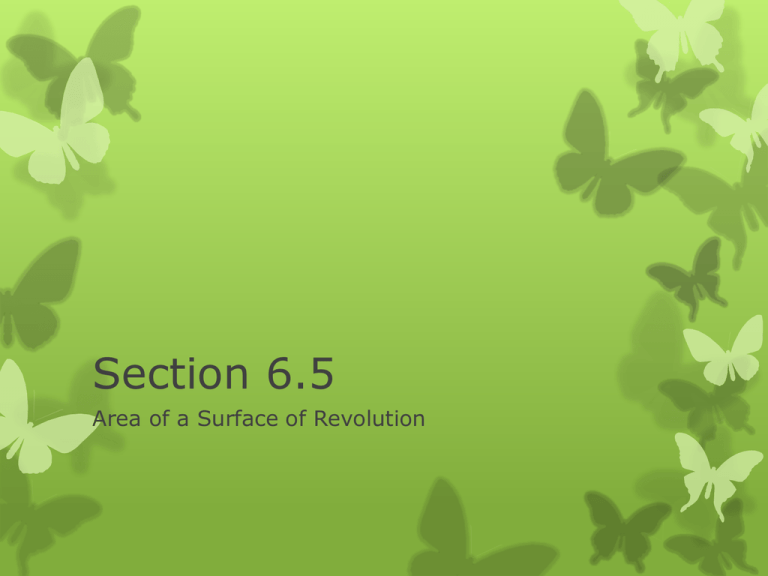
Section 6.5
Area of a Surface of Revolution
All graphics are attributed to:
Calculus,10/E by Howard Anton, Irl Bivens, and Stephen
Davis
Copyright © 2009 by John Wiley & Sons, Inc. All rights
reserved.
Introduction
In this section we will find the area of a surface
that is generated by revolving a plane curve about
a line.
It is very similar to section 6.4, therefore, the
equation is very similar to that of arc length.
The difference is that we need to revolve it around
a line like we did in sections 6.2 and 6.3.
Since we are only rotating the outside curve (not
the area between it and the axis or line), each
small section will be approximated by the
circumference of the circle infinitesimally narrow
width.
Examples Rotated about the x-axis
Around the x-axis
Break the Surface into Small
Sections
Calculate Surface Area Using
Riemann Sums
Each of the subintervals into which we broke the
surface area on the previous slide (figure b) is
called a frustum which is a portion of a right
circular cone.
As we allow the number of subintervals to
approach infinity, the width of each approaches
zero.
Each subinterval gets closer and closer to
resembling a circle who’s circumference is
r.
We calculated the length of each subinterval in
figure a on the previous slide last class using the
distance formula.
Combine the Distance Formula
and the Circumference
The arc length (distance) formula from last
class and the circumference which represents
the rotation around a line combine together to
generate the following Riemann sum-like
expression:
When we take the limit as the number of
subintervals approaches infinity, this Riemann
sum will give us the exact surface area.
Integral – when about the x-axis
Example about the x-axis
Integral – when about the y-axis
Example about the y-axis
At my cousin’s wedding

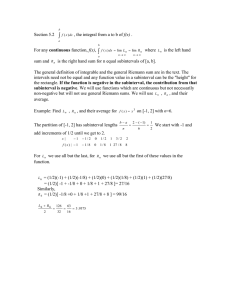
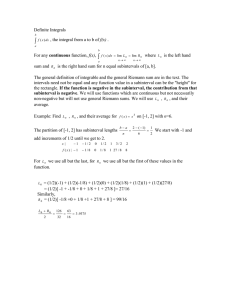
![Student number Name [SURNAME(S), Givenname(s)] MATH 101, Section 212 (CSP)](http://s2.studylib.net/store/data/011174919_1-e6b3951273085352d616063de88862be-300x300.png)
